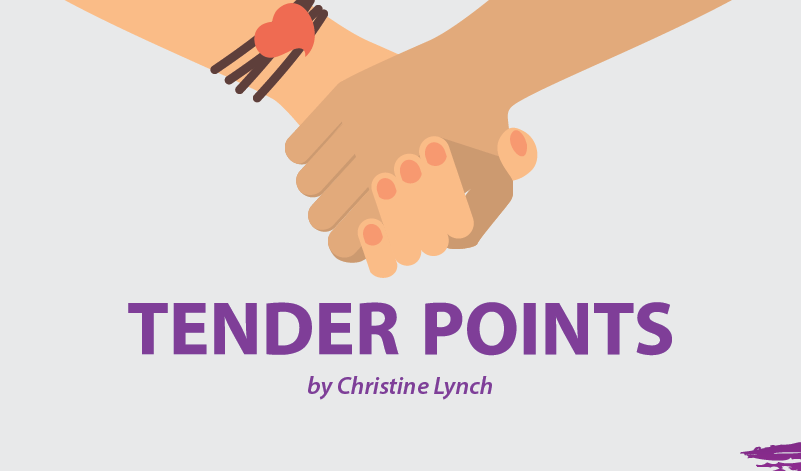I used to tell a white lie when asked why I appeared to be “down.” I’d say it was due to some physical problem. That was easier than trying to explain depression to someone who’d never experienced it. My first clue to the challenge ahead of me was when someone asked, “What are you depressed about?” As if depression were “about” anything! The Mayo Clinic defines depression, aka major depressive disorder, as “a mood disorder that causes a persistent feeling of sadness and loss of interest.” It “isn’t a weakness, and you can’t simply ‘snap out’ of it.” The causes are as diverse as the symptoms.
The symptoms vary from person to person. The most common for me are insomnia, fatigue, loss of interest in things I once found pleasurable, trouble making decisions, loss of appetite, and increased severity of physical problems. Other people experience the exact opposite of these symptoms in addition to others not listed here.
Some depressed people are able to tolerate one or more of the prescription drugs designed to address this issue. Others rely on natural supplements such as Sam-e, St. John’s Wort, and 5-HTP. Unfortunately, I’m not one of them. My digestive system is intolerant of them all.
Knowing this, I make an extra effort to get the recommended nutritional therapy from my diet. I get vitamin B6 in the form of baked potatoes, avocados, bananas, and chicken breast. These are the staples of my diet. I get Omega-3 from salmon and anchovies. A daily salad provides folic acid. I also manage to tolerate a dose of liquid vitamin B-12 once a week. And I eat some dark chocolate every day. Whether the food I eat improves my depression is difficult to assess. I’m unwilling to alter my diet in order to test the theory.
Over time I’ve discovered that some activities help me feel better. Three that make a huge difference for me are exercise, getting sunlight, and being with people. I try to practice them daily.
When pain or fatigue are at their peak, exercise is a challenge. If I can’t do the 30-minute walk I prefer, I try to find an activity (even if it’s not very athletic) that I can do for 10 minutes at a time, three times during the day. It could be some dance movements in front of the TV to a favorite music station. It could be yoga stretches on the floor. It could be a balance routine as simple as standing behind a chair on one leg at a time, using the chair for support. Even this amount of effort helps to improve my mood.
Sunlight also makes a difference for me. It’s the major reason I moved to sunny southern California from Central New York state (not known for its excellent weather). Although never officially diagnosed, I suffered from seasonal affective disorder (SAD) while living there. Annually, I descended into darkness in the early fall and never felt human again until May. Many New Yorkers think snow is beautiful. To me, it was an unpleasant reminder of dreary days and unhappy feelings.
Here, in my new location, I find that an hour a day in the always-available sunshine makes a huge difference in my mood while also improving my ability to sleep. On good days, I walk in the sun for 30-45 minutes. That may be all I can accomplish that day, but it almost ensures I’ll feel more positive about anything else that I do.
Last, but far from least, being with other people is helpful for my depression. Just getting myself dressed and presentable to the outside world can be a chore. And it’s not always easy to smile and pretend to be interested in life. But knowing the difference being with others makes in my mood, it’s totally worth the effort for me.
Again, each person is different. It took years of experimentation to discover what helps for me and what doesn’t. And I’m still learning! I encourage you to make your own list. Try anything and everything. Don’t stop searching until you find what works for you. And when it comes to explaining depression, I wouldn’t even try.
***
Note: Fibromyalgia News Today is strictly a news and information website about the disease. It does not provide medical advice, diagnosis, or treatment. This content is not intended to be a substitute for professional medical advice, diagnosis, or treatment. Always seek the advice of your physician or other qualified health provider with any questions you may have regarding a medical condition. Never disregard professional medical advice or delay in seeking it because of something you have read on this website. The opinions expressed in this column are not those of Fibromyalgia News Today or its parent company, BioNews Services, and are intended to spark discussion about issues pertaining to fibromyalgia.



totally enjoyed this article. Thank you for sharing. Fibro-MONSTAH flares back to back these days. Daily temperature and rain every day or so. Slammin’ doors in Mr. Depression’s face. Had to alter exercise routine after tipping in Tai Chi and dizziness episodes during Yoga session. We will not quit!
What this article highlights is that depression more often than not is a biochemical disorder. Fortunately, many forms of depression can be treated by nutritional means. Please read; Depression – A Nutritional Disorder
http://www.hypoglycemia.asn.au/2011/depression-a-nutritional-disorder/
My wintertime SAD has also improved since moving from the gray Midwest to sunny Colorado, but I still feel the seasonal changes with the shortening of the days. I find that 30 minutes of blue light (light box) every morning really helps!
I agree totally about the diverse causes of depression, and how they can be wildly different person to person. Living my whole life in the Deep South, I can assure that attitudes regarding depression (even among physicians and psychiatrists) vary just as much. Regardless of what you, the patient and the one *Who Is Supposed To Know Most About Your Symptoms* – says in the time allotted in your appointments, somehow, the subject almost always comes back to a few standard causes for depression.
Treatment plans here almost never include the patient in the development; and it’s almost silly to even use the term “treatment plan” because it only consists of a prescription of one or 2 standard depression meds (Paxil, Prozac) and a lecture to remind you that only you can control your thoughts, and you should pick up a hobby.
Having a somewhat medical background, I have an idea about the proper way to diagnose depression. Asking me if my husband could be having an affair (“well, you know men have to have their time out… Seriously???) —that’s ynot in the diagnosis protocols anywhere!
I think all the many facets of Fibromyalgia should be taken apart, considered singly, and all primary care and internal medicine physicians should be retrained in this anomalous disorder, one attribute at a time, then as a single nightmarish disorder. Not only that—they need the Psycho/Social classes to go with the medical training, so they can get an idea of how we live our lives daily. They should be forced to listen to anecdotal histories from various patients, more than the 5-8 minutes they might give us in the exam room!
Now, if anyone has an idea how to implement this grand idea of mine, please let me know! If I’m not too depressed or too agoraphobic, I’ll talk to you! Lol…